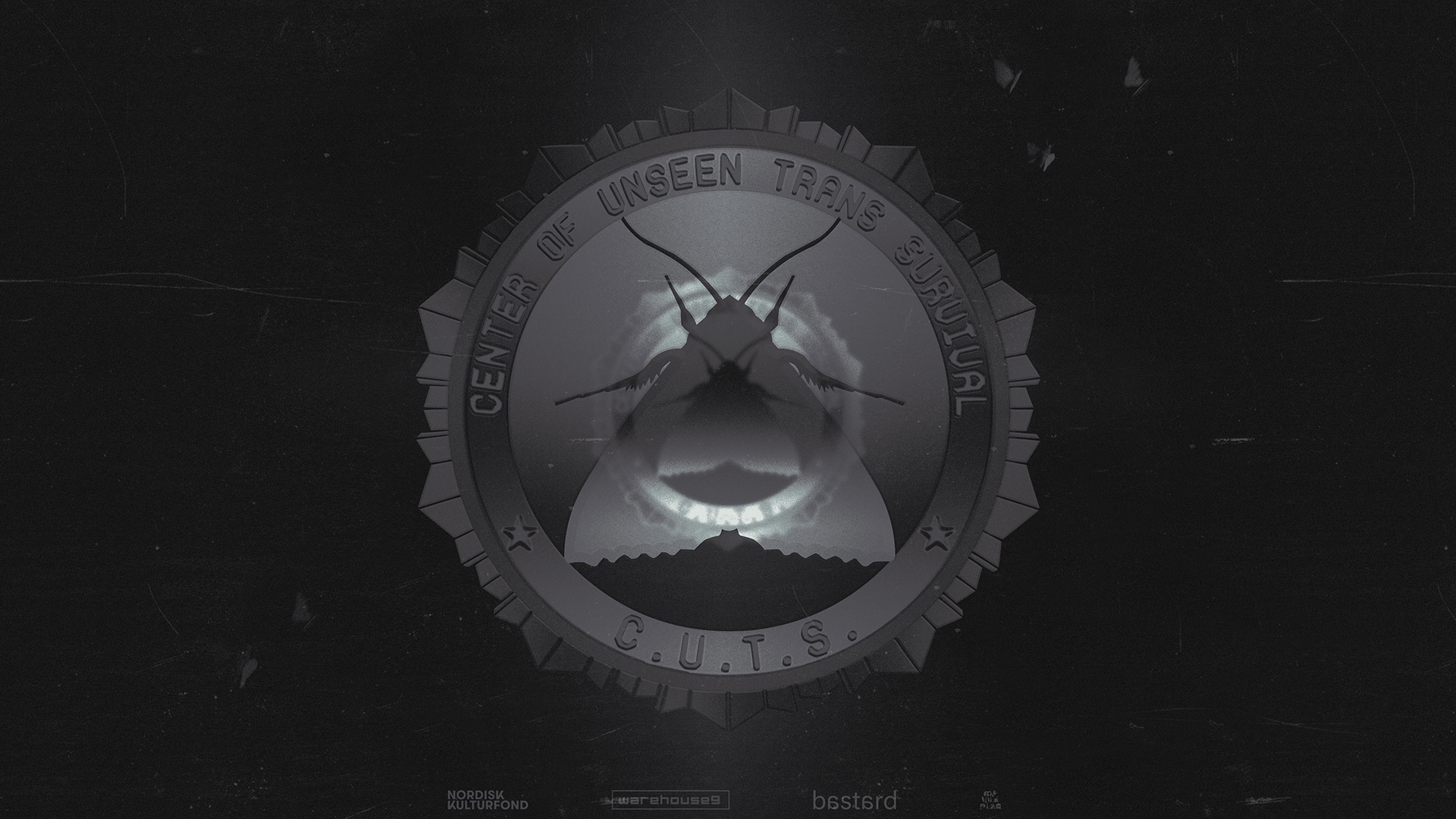This report investigates the Unexplained Para-Institutional Phenomenon (UPIP) ‘Center of Unseen Trans Survival’, or as it is colloquially referred to: C.U.T.S. The report is compiled in three parts. First, I recount my initial contact with the UPIP in 2024. Second, I offer a brief survey of the UPIP’s operations and organisational structure. Third––and conclusively––the report ends with a letter from the UPIP’s founder, which was uploaded to C.U.T.S. shared drive in August 2025. The letter contains clues to both the origins and the potential future development of C.U.T.S.
DISCLAIMER: This is a report, but it is also a story about how I found myself in the backrooms of a phenomenon far more complex than I had anticipated. C.U.T.S. is not just alive but as an entity of change, it seems to mutate at every new observation. Its nature is constantly under scrutiny and interrogation—forces to which it tries to configure, adapt, and respond.
This is a testimony to my journey into the inner, dark chambers of C.U.T.S.—spaces that may at first appear guarded by obfuscation, opacity, uncertainty, and secrecy, but whose interior is lit up by the need to persevere, and the hope to make life—especially in the niche connected art worlds where C.U.T.S. has installed its mission—a little less lonely and easier to endure.
PART I
[EDITED PERSONAL LOG ENTRY]
July, 2024
Rome, Italy
At a rave hosted in an abandoned office building in the outskirts of Rome, I received a business card from a bartender when I tried to order a martini. For a moment I thought he misheard me, but he was wearing a white “Arm the Dolls” crop tee with tight short sleeves, framing his trade-looking upper body, covered with tattoos of cocktail glasses, symbols of entry-level occultism and gothic anime girls. It felt like a major flaw in his character build to know what a doll was but not a martini—both being staple objects in the ‘heteroflexible male’ starter pack.
Before I had a chance to ask who and where the card was from (and re-order my drink), he proceeded to the other side of the bar to steer away a group of horny-looking finance bros who had just arrived. My guess was that they were a bunch of absent fathers and/or recent divorcees looking for something exotic to dip their dicks in. The bartender appeared to take his job at protecting the crowd quite seriously. A true ally. Or chaser. Probably both, as I have seen the latter disguised as the first one time too many. There was a slight chance that he was gay. But if he was gay, which I doubted, not serving a hag like me her martini was to go against the holy alliance between faggots and their friends. The dolliverse would punish him accordingly, I thought, to soothe myself.
I figured I would try my luck on getting a drink later on and turned around to examine the card in the lights pulsating from the dance floor in strong, rhythmic waves of red, green and blue. The card was made from thick unbleached paper, the rounded edges were weirdly sharp, as if they had just been cut. There was a discreet imprint of some sort of symbol on it, only discernible via touch. I sensed the contours of a bewinged creature, like a butterfly or a moth, enclosed in a wreath. A sigil or crest, I assumed. Did it belong to some covert invite-only club? Or was I just projecting my own longing for something esoteric to which the rave felt like a bad derivative?
Earlier the same week I had arrived in Rome to finish up another case. This time, I was staying at an ‘institute’—a fancier name for an exclusive Airbnb located in a building designated as ‘cultural heritage.’ The institute had no direct booking system, but was instead disguised with an elective open call process, offering subsidised pricing if you were rewarded with a room. The rooms were not luxurious, as one might expect from an exclusive selection process, but frugal, to say the least. I didn’t mind, I wasn’t planning on enjoying Rome. And also, I didn’t complain, as my most reliable but obscure client –– Feigned Institute of Sexed Habituation (FISH)––was always generous and paid for my expenses, which was more than to be expected in a line of work where the majority of work is unpaid and unseen. I needed to lock in for at least two weeks to truly devote myself to the case. Like a nun, I made a promise to God, only thing was that God had been completely replaced by my sacrilegious devotion to serve FISH. I managed to honour this promise for six days. Until P called.

P was a nonbinary art school drop-out in their mid-thirties. They were a frequent raver with a serious ketamine addiction who was in town visiting. We had found each other during lockdown, when P hadn’t detransitioned yet and was trying to pursue a life as a performance artist. We worked together for a while but had a falling out regarding our different ‘work ethics’. I was a professional (derogatory), while they were DIY and punk (compliment). The real difference was that I was living paycheck to paycheck, P did not, since they overcharged their Altbau Wohnung and leased it to immigrants and Erasmus-students, an unethical yet lucrative business which generated a decent sum of money. Enough for P to get by at least. For the most part, they crashed at their parent’s estate or at a random lover’s place. P didn’t seem to mind the fact that they profiteered from other people’s precarious situations, or that they pretended to be homeless. What P minded was the image they were trying to uphold — the image of the cosmopolite.
Since the fallout, we had mostly just said hi when we bumped into each other, and I was happily surprised when they called. Naively, I thought joining them for a night out would commemorate what I knew in my heart was an already dead friendship. Also, God created the 7th day to not work. And not-work, in dolliverse, was often defined by going on a bender.
P had heard about this part-performance hub part-sex club in the outskirts of the town. Or as they called it: a kink positive performance collective turned fundraiser rave. They couldn’t recall the name or what the fundraiser actually was for, but they had saved the location on their phone. “Rumor has it that one is able to reach the location via underground tunnels from the city center,” P said. After much convincing, we took an Uber, much to P’s dismay. I wouldn’t let P drag me through some ancient catacombs to a secret location. My death drive just wasn’t that strong that day.
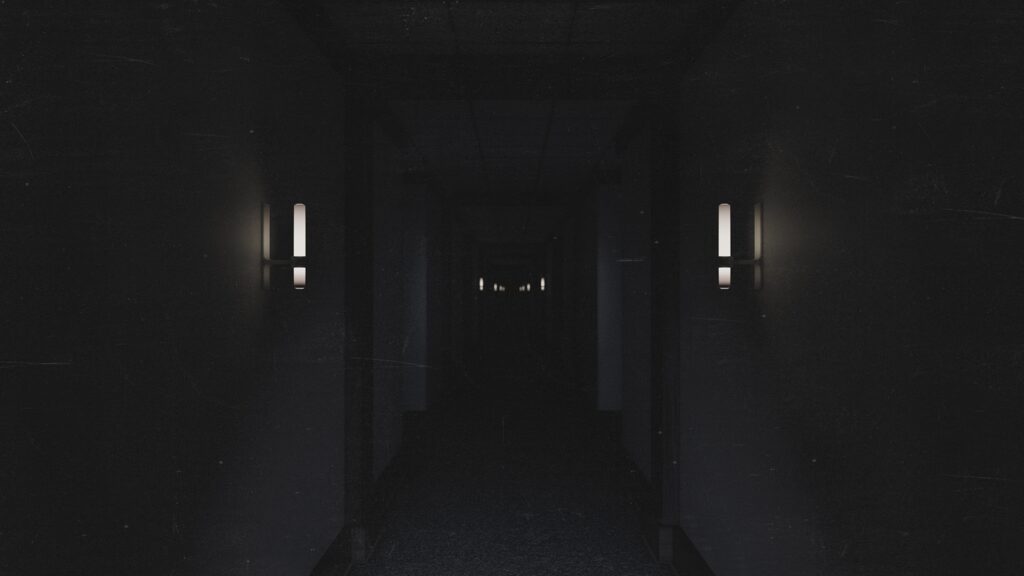
As soon as we passed the entrance to the venue (which, upon arrival, I saw was named retrobottega), I watched their mullet from behind—greased with lube and fixed with heavy hairspray to stay in place—wade into the sweaty sea of strobe lights and smoke, along with the other club urchins, as if they had been charmed by a siren song. I recognized some of the other faces, many of whom surprised me. Two of them, M and C, were even staying at the same institute as I was. I watched P hug them. They were probably all old friends from P’s’performance days’, which they so often spoke of as if it were a paradigmatic, bygone event like the French Revolution.
M and C were the kind of people who left me with an unspeakable terror whenever I interacted with them, as if I were communicating with maleficent spirits. Their presence was nothing short of the spectres of the Inheritocracy—the poltergeists of Old Money—which staged a grand haunting every time a working-class individual was foolish enough to try to make themselves at home in the house of Art.
For those who wonder what these people are like, let me make a quick rundown of the two I had standing in front of me:
M was a short, effeminate man who was often honored for having “done so much for the community” with his online ‘platform’ (personal Instagram profile). What M had done for the community was that he had risen to the level of online fame (achieving the status of ‘micro celebrity’) two years ago with his TikTok-videos “The Tabi Thief”. The videos showed him walking around hysterically in his townhouse, accusing a doll of stealing several pairs from his allegedly ‘rare’ collection of Maison Margiela shoes after a party he had thrown. Shortly after, he quickly rebranded himself. Within a year M had transformed from being a strange internet sensation to a ‘curator’ and ‘LGBT-advocate’, using his amassed following to platform and repost other people’s fundraisers, activist initiatives, exhibitions, and what not. This was strange not only because of the transmisogyny he had built his momentum on, but also because he had no earlier political engagement or genuine interest in the overlap of social work, art and aesthetics. But it didn’t really matter, because M possessed a dark triad of influence: he was gay, entitled (rich) and opinionated (lacked actual skill and competence).
The other one, C, wasn’t as flamboyant as M. Nonetheless, she was just as much of a character—and had also done her ‘fair share’ for the community. While M had pivoted into LGBT activism, C was a modelesque heterosexual woman who had somehow become a spokesperson for ‘sapphic culture’. C was a nepo baby who had bought her way into the hearts of lesbians with her magazine Sapphisticated—a posh publication featuring uplifting stories about cool, powerful lesbians; exposés on the evils of the patriarchy; investigations into the latest beauty trends; hearty, rustic stew recipes; and, coincidentally, strong messaging about the importance of reproductive rights for white, middle-class cis women. Most notably, C had achieved international fame through her advocacy of blood transfusions as a form of rejuvenation. She had recently seen a surge in readership after a ‘pronoun-related’ dispute with her blood girl (a working-class doll), propelling Sapphisticated to become the top-selling magazine on lesbianism in the UK and Nordic countries.
I stood there watching, monitoring, as P, M, and C slithered across the floor in anaesthetic bliss—like the sleepy heads of a hydra. “The Recluse,” some friends had started to call me, as if it was an established slur. They weren’t wrong. Going out had started to feel more burdensome than usual, and I’d never been much for small talk with this kind of crowd. But I wasn’t antisocial. I had seen many trips like the one unfolding before me—and had been part of them, too. But over the years, the trips lost their charm. The trips where identities dissolve, egos temporarily vanish, time ceases, and space itself expands into a soft, neutral holding environment of some strange, pre-subjective and childlike wonder. I witnessed this egoless milieu manifest itself as their pupils enlarged, but behind those pupils were no souls—only a fluid, structureless tyranny. “This is how you abolish and unlearn the ways of capital,” they probably thought.
The situation was symptomatic to say the least; the vast majority of people around me didn’t need anything in the humiliating and desperate way that I did. Their problem wasn’t driven by the fundamentals of need at all, but by superficial wants—to be upgraded from Heir of Financial Independence to the status of Virtue Overlords by using ‘the psychosocial potential of psychedelics’ and ‘art’ as moral diffusors of their secret goals. What kept me from a sense of community—what made me loathe it—was the alienating bloodlines of Old Money that cut across every vector of this world I had chosen to be a part of. I still held the card in my hand, stroking my thumb over it as if a haptic trigger might summon the thing I longed for. On the other side of the card, I could feel a square stamped into it. I made my way down one of the many corridors, hoping to find my way out of the building so I could get a proper look at the card.
After mistakenly walking into a darkroom and turning on the lights during a ‘techno-somatic exercise’, I paced myself to the bathrooms and took shelter in one of the stalls, as if I was hiding from an enemy in a horror movie. Sitting there on the dirty toilet seat, inhaling a disgusting symphony of piss, cum, excrement, and artificial overtones of chloride and amphetamine, I saw what the square on the back of the card was: a QR code. I scanned it.
It led to an email address. I texted, “Hello?” and pressed send before realizing that no covert society would ever answer a message like that. No one would initiate contact with someone this socially awkward. I sighed and put my phone back in my pocket.
Then a swooshing notification sound caught me off guard. I flinched, and the sharp corners of the card (still in my left hand) broke the skin in my palm.
“Welcome to C.U.T.S. Please read the attached file ‘Terms & Conditions’ before proceeding.”
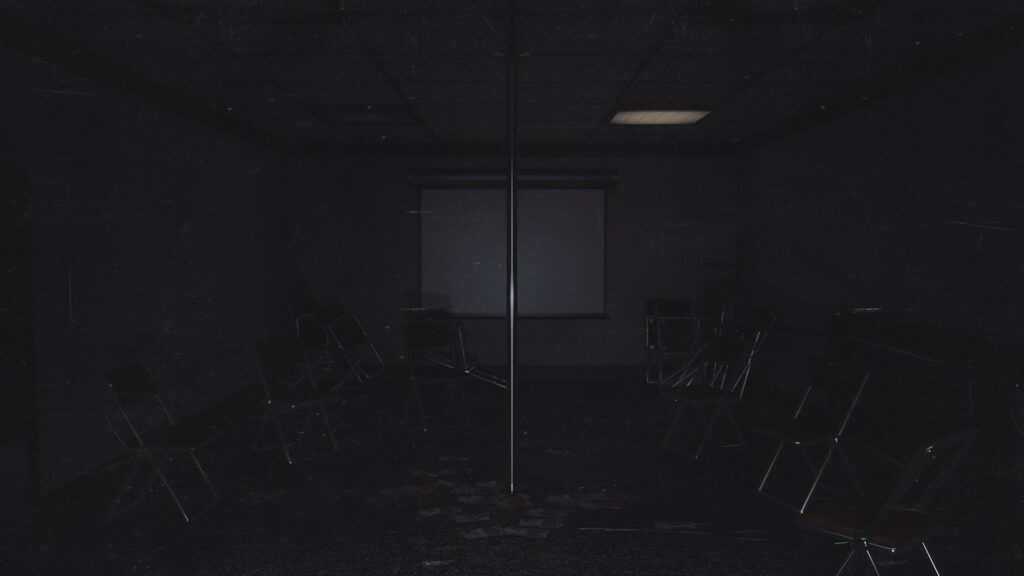
PART II
[EXCERPT FROM MY SURVEY WRITTEN FOR C.I.S. – CENTRAL INTELLIGENCE OF THE SEX]
December, 2024UPDATED:
Copenhagen, Denmark
September 2025
Stockholm, Sweden
C.U.T.S. is an itinerant, para-institutional, artist-run center currently based in the Nordic region. C.U.T.S. supports its members by arranging showcases, network gatherings, online publication and distribution. It also offers anonymity to members by lending itself as an artistic ‘vessel’ when needed. C.U.T.S. is aimed at sustaining and realizing the visions of trans artists, as well as projects indebted or devoted to trans survivalist strategies. It seeks to experiment with alternative systems of creative production and support amid rampant transmisogyny and trans antagonism. By utilizing various financial models, institutional bodies, and art venues available in the Nordic countries, it aims to initiate a para-institutional structure for trans artistry—on its own terms, as much as possible.
Please beware that the experimentation C.U.T.S. attempts to do is complex, contrarian and filled with flaws and bugs —just like the present structures from which C.U.T.S. have sprung.
– Excerpt from C.U.T.S. Terms & Conditions, 2024
Since my initial contact with the UPIP in Rome 14 months ago, I have become acquainted with most of C.U.T.S. objectives and operations. Piece by piece, I have slowly been able to construct an overview of it, although it took longer than expected.
My knowledge of C.U.T.S. has been shaped largely by my correspondence with its members, several of whom I have stayed in close contact with. For the sake of their integrity, I have chosen to not disclose the names of the members, although I know many of them will step forward in the near future, as C.U.T.S. arranges its first public event in Stockholm on September the 5th at My Wild Flag.
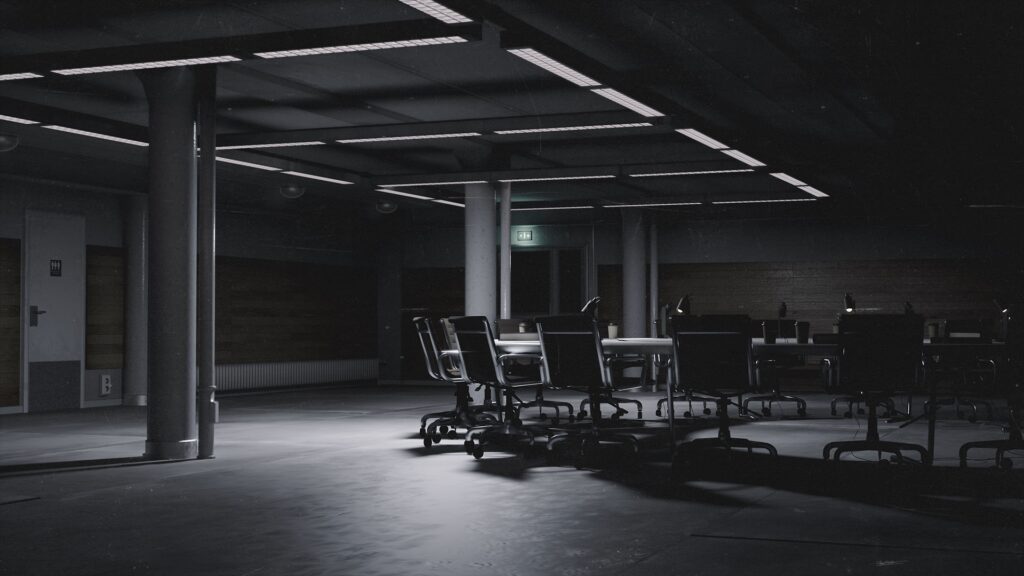
In my survey, there have been about 30 files on C.U.T.S. shared drive at my disposal. These files contain letters, minutes from meetings, plans, budgets, unseen artworks, documentations of different unnamed locations, and more. I have also gained access to mail correspondences the members have had with C.U.T.S. founder.
With that said, my survey aims to make the following remarks on C.U.T.S. nature, its structure and set of operations:
1. C.U.T.S. is an artistic center that operates according to an infrastructural logic. By that, I refer to a structure that is not a building, but a system beneath—a network that ties the buildings together. Almost like an atmosphere or environment, a kind of connective tissue—but not the things being connected themselves. Often, infrastructure is not immediately seen, but felt as that which makes this or that thing possible. Infrastructure, then, easily evades documentation, as it signals a drift away from the ‘meaty’ corporeal reality of the individual body, toward the subtle body of the interpersonal, the reproductive, the iterative system that enables possibility to actualize itself. This might be what accounts for the ‘unseen’ nature of C.U.T.S.’s operations—a word which is also part of the center’s name.
2. C.U.T.S. at the moment offers ‘showcases’ (self-organised evenings to present the work of its members), feedback sessions with its founder, network meet-ups and online publication via platforms such as bastard. For the majority of these activities, C.U.T.S. pays a fee for participation.
3. C.U.T.S. general objective is to utilize funding systems and institutions in the Nordic region as financial energy and host bodies for its operational gains. It aims to hold and distribute resources for a group of artists who are increasingly being persecuted and villainized. The word ‘survival’ seems to refer to the practical nature of C.U.T.S. as it seeks access to financial means, as well as other vital material and spatio-temporal aspects of art production—such as acquiring temporary workspaces, organizing showcases, securing residencies, and so on. The term ‘para-institution’ signifies a clear non-alignment with specific institutions, and C.U.T.S. is not tied to any institutional agenda.
4. C.U.T.S. seems to have secured some financial support via different funders and venues across the Nordic region, such as the Nordic Culture Fund and Nordic Mobility Fund. How C.U.T.S. aims to support itself in the coming years remains unclear.
5. C.U.T.S. operates with different shades of opacity, particularly in its use of language and modes of presentation. Such strategies seem to result in symbolic saturation, which serves to play with current assumptions and expectations on ‘trans artistry’.
6. Adding to the symbolic saturation of C.U.T.S., its organisational oeuvre seems to be consciously written between fact and fiction, functioning as a form of strategic resistance against the stereotypical pressure on trans artists to be true, ‘authentic’, biographical, confessional, etc. This operation appears to be linked to the center’s recurrent emphasis on redistributing agency—rather than visibility—to trans artists, using fiction and speculation as modes of writerly and operational integrity. The use of the moth as a symbol also attests to this idea, as the moth is a creature of the unknown, of mystery, but also of transformation and growth.
7. The size of C.U.T.S. operations and its number of members remain unclear, although it seems to exponentially grow. From what I can gather, C.U.T.S. consists of at least between 15-20 members from Sweden, Denmark, Finland and Germany (the nationality of some members remain unverified).
8. As already mentioned, C.U.T.S. is set to have its first public event the 5th of September as part of the performance festival My Wild Flag at Hallen i Farsta in Stockholm. There are also rumours of a second event being planned to take place in Copenhagen at Warehouse9 in late October 2025. How many secret events that have already taken place remain unclear, but there seem to have been several meet-ups and gatherings before.
9. The future of C.U.T.S. seems to be under constant configuration, as it emphasizes itself as an itinerant structure that is provisional, updatable and adaptable.
10. C.U.T.S. has a founder. My guess is that the founder has, to a large extent, run C.U.T.S.’ operations on their own—something that is expected to change in the near future due to the ‘consequences’ it has had on the founder’s ‘personal health’ (source: anonymous member). Most of my knowledge of the founder is based on Notes on C.U.T.S. Future, attached as the last part of this report.
CONCLUSION
Identifying and classifying C.U.T.S. has been a difficult task. Adding to the level of difficulty is the lacking history of para-institutional initiatives—particularly for this type of minority—as it seems to be largely undocumented in this geographical area. How to classify C.U.T.S. thus raises a much larger question, one that calls for a nuanced historical overview—a project far beyond my current capabilities. Additionally, the status of the founder, as well as the unknown future of C.U.T.S. as a whole, makes classification an operation bordering on speculation.
I have therefore chosen to publish Notes on C.U.T.S. Future to invite the public into an open investigation of what C.U.T.S. is—and what it aspires to become.
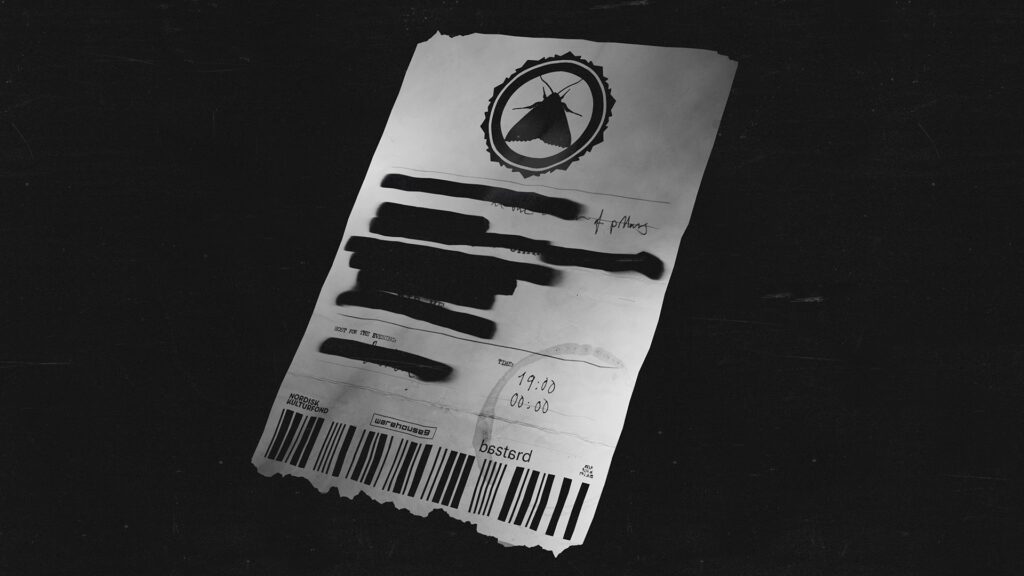
PART III
[COPIED FROM A PDF UPLOADED TO C.U.T.S. DRIVE 30TH OF AUGUST 2025]
To those concerned with C.U.T.S. future,
C.U.T.S. began with the simplest of ambitions. To put together a program that focused on the Nordic context of ‘trans artistry’. Two cities, two countries, two evenings. Nothing more. I received a small project grant from Nordic Culture Fund, and with that money I tried to create something more than what it was supposed to initially hold. C.U.T.S. has been an attempt at something which can grow up to be an iterative operation. It remains a speculative approach, and only the future can tell if C.U.T.S. will be able to sustain itself as a structure rather than a project-bound phenomena.
Why, you may ask. Why push more expectations into it? Why not just keep it easily managed as a project? Why make it so damn difficult? Because it dawned on me that singular initiatives were perhaps not the most needed thing for us in these times. What was needed was instead a structure which was repeatable, adaptable, sustainable. A thing which could hold things, whatever those things might be. I chose to call it a center, as centers are usually vessels of a common interest or concern.
C.U.T.S. was born out of my own necessity and personal exhaustion with the current situation. As someone still early in my career, I encounter what can only be described as a loop of tokenization, scrutiny, hyper-visibility, economic insecurity, loneliness, and institutional lovebombing followed by abandonment. I also felt a complete lack of an organisational initiative between trans artists. So what I realised that I could do was to use the money I had received to initiate a dialogue with other artists in a similar position, to speculate together on what a deeper structure for ‘trans artistry’ could look like.
I hate expressions like that by the way,“trans artistry”. Yet I have found myself having to push this specificity, even though it is dangerous and might just end up reinforcing exceptionalism. Every project which undertakes something related to ‘identity’ and the formation of subject position runs the risk of dying on the hill of a superimposed radicality of this or that position. Of course, I wish it didn’t matter at all who we were, trans or not. Trans is not inherently anything. But unfortunately, we part-take in an art world where transness often leads to an unbearable position of visibility followed by immense scrutiny. It is a vexed terrain of exotification and exceptionalism which often reinforces an early trans experience as the eternal end-goal of our practice. The art world holds us in a neolithic state, forcing us to rebuild transness over and over, to explain it, to be held accountable for it. These expectations fall especially heavily on trans women.
There really is a type of critique uniquely applied to trans women—our work is simultaneously fetishized and invalidated. We are expected to show up and perform visibility, but only within absurd, contradictory demands: “Be self-deprecating. But in a fun way! Be sexy, but not too sexy! Be chaotic, but not too demanding and in our faces! Pass, but not too well!” Trans women are set up to fail—spectacularly—without the compensatory mechanisms afforded to cis women under systemic misogyny. Here, in both Sweden and Denmark, where many art institutions, curators and other artists pride themselves on being ‘woke’, I’ve experienced dark sides of opportunism, indifference, silencing, and effective altruism of seasonal “LGBT-programs” masquerading as progressive allyship, making us all into one-trick ponies of portraying transness.
C.U.T.S began to take shape in 2023, and has up until today followed a quite vague descriptor as its objective: to promote a wide array of trans artistry coming from a broad selection of artists on the trans spectrum in the Nordic countries. In 2025, the political situation is becoming increasingly different at a global scale, and C.U.T.S. will need to make its future objective much more specific. It will need to support the works by and practices of trans women, especially those who face intersections of oppression due to class and race. This must be done to a much higher degree than what it has had the possibility to do until now.
It goes without saying that I’m not trained as a producer. C.U.T.S. didn’t begin as a structured hypothesis or a claim to organize people with the know-how of an experienced activist or an NGO. It started from a place of want and need—personal, messy. It took months to even name what I wanted to create.
Eventually I understood that C.U.T.S. core is not an aesthetic one. I do not care to make claims on “trans aesthetics”. But I do care for a response to the increasingly hostile climate for trans life and trans artists. An atmosphere of intensified transmisogyny—legal, social, and symbolic—shapes our contemporary moment. C.U.T.S. can become a vessel through which we can enact a counter-force to such transmisogyny, however local and temporary such resistance might be in the end.
I want to imagine C.U.T.S. future as an infrastructure. But I use the term infrastructure cautiously. C.U.T.S. can be infrastructural only in the sense that it can propose ways of holding—structures that are provisional, updatable, iterative. For a while, I liked to imagine C.U.T.S. as an “artistic strategy”. But the truth is, the majority of us are not working from a strategy tailored by some militant stratagem or the safety of capital. Trans survival is improvisational. It reinvents itself and is lived out in dimly lit spaces: word-of-mouth, subreddits, Discord servers, private group chats, backrooms, personal archives. The gnosis of trans life is constructed informally among ourselves. C.U.T.S was my way of imagining a potential structure for trans artistry, a structure that was also able to suck out financial energy and use available art institutions as host bodies. I know there are many different structures one can propose. Mine has been merely a suggestion. I believe we need many suggestions of how community can be formed at this moment in time.
We must find new grammar, someone told me once. I believe this person is right on the money. We need new grammar for what we are trying to envision. And I believe this grammar can only come from a redistribution of resources and organisational experimentation. I guess that is what I set out to do: to imagine and initiate something that could grow into a container or environment for this new experimental grammar. And perhaps I failed in the process. But even then, I will find some comfort in knowing I tried.
Sincerely,
C.U.T.S. founder
